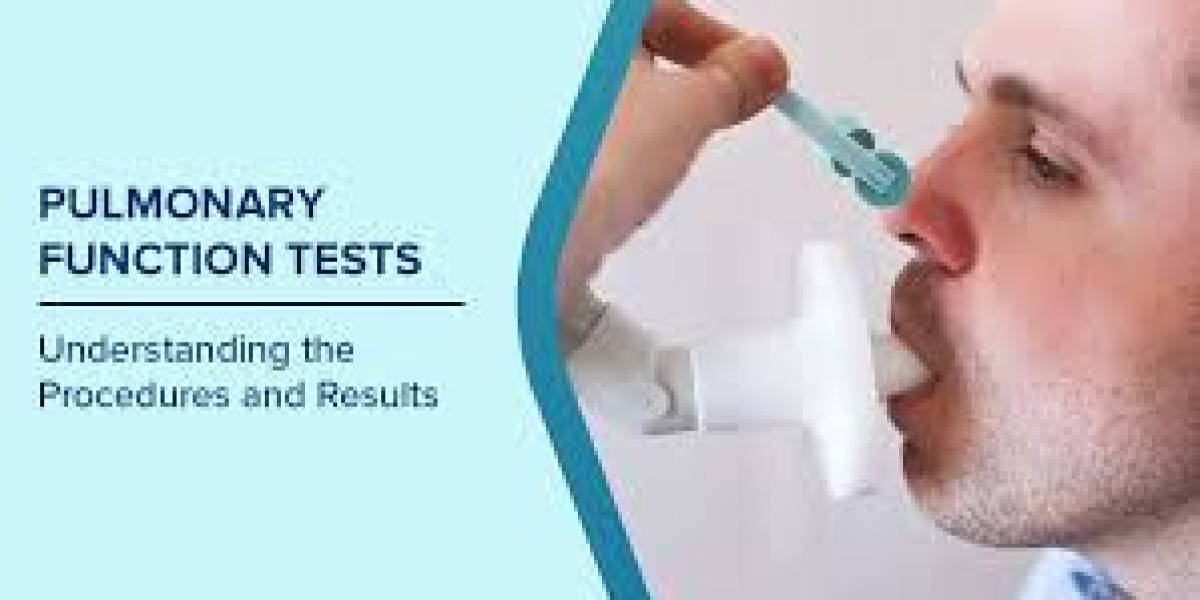In today’s fast-paced world, respiratory health is often overlooked—until breathing becomes difficult. Whether it's a chronic cough, shortness of breath, or unexplained fatigue, these could be symptoms of underlying respiratory issues. One of the most effective diagnostic tools physicians use to evaluate lung health is the Pulmonary Function Test (PFT).
This comprehensive guide explains what Function Tests are, how they help diagnose breathing issues, what conditions they detect, and what patients should expect. Backed by clinical research, current guidelines, and real-world data, this article offers both clarity and depth.
What Are Pulmonary Function Tests?
Pulmonary Function Tests are a group of non-invasive tests that measure how well your lungs are working. These tests evaluate lung volume, capacity, rates of flow, and gas exchange. The results help doctors diagnose specific types of lung disorders and assess how severe they are.
The most commonly used PFTs include:
Spirometry
Lung volume measurement
Diffusing capacity of the lungs for carbon monoxide (DLCO)
Arterial blood gas analysis (ABG)
Bronchoprovocation testing (such as methacholine challenge)
Why Are Pulmonary Function Tests Important?
PFTs are essential in the early diagnosis and ongoing management of respiratory diseases. According to the American Thoracic Society (ATS) and European Respiratory Society (ERS), these tests provide quantitative data on pulmonary status that subjective symptoms alone cannot reveal.
Some key benefits include:
Detecting early signs of chronic respiratory conditions
Monitoring progression of diseases like asthma and COPD
Evaluating treatment effectiveness
Pre-surgical lung evaluation
Workplace exposure assessments (especially for chemical inhalants)
Common Breathing Problems Diagnosed Through PFTs
1. Asthma
Asthma affects over 262 million people globally (WHO, 2023). Spirometry is the gold standard in diagnosing asthma, particularly reversible airway obstruction.
2. Chronic Obstructive Pulmonary Disease (COPD)
Over 300 million people live with COPD globally. PFTs help classify COPD severity based on the GOLD criteria (Global Initiative for Chronic Obstructive Lung Disease).
3. Pulmonary Fibrosis
These Function Tests are vital for diagnosing and monitoring interstitial lung diseases like idiopathic pulmonary fibrosis, helping to assess lung capacity and gas exchange impairment.
4. Bronchiectasis
Spirometry and lung volume testing can assess the extent of damage and airflow obstruction in bronchiectasis patients.
5. Restrictive Lung Disease
Lung volume measurements determine whether lung restriction is due to chest wall deformities, obesity, neuromuscular disorders, or intrinsic lung conditions.
Understanding the Key Pulmonary Function Tests
Spirometry
Spirometry is the most common PFT. It measures how much air you can inhale and exhale, and how quickly you can exhale.
Key Metrics:
FEV1 (Forced Expiratory Volume in 1 Second): The amount of air you can forcibly exhale in one second.
FVC (Forced Vital Capacity): Total amount of air exhaled during the test.
FEV1/FVC Ratio: Used to differentiate between obstructive and restrictive lung diseases.
Lung Volume Testing
This measures the total amount of air the lungs can hold. It identifies restrictive lung diseases where lung expansion is impaired.
DLCO Test
The Diffusing Capacity of the Lungs for Carbon Monoxide test assesses how efficiently the lungs transfer gas from inhaled air to the bloodstream.
Methacholine Challenge Test
This test helps diagnose asthma by intentionally triggering mild bronchoconstriction using methacholine and measuring the response.
What Happens During a Pulmonary Function Test?
Preparation:
Avoid heavy meals, smoking, or caffeine 4–6 hours prior.
Stop bronchodilators if instructed by your doctor.
During the Test:
You will wear a nose clip and breathe into a mouthpiece.
A technician guides you to breathe normally or forcefully depending on the test.
Duration:
30 minutes to 1 hour, depending on the number of tests required.
Safety:
PFTs are generally safe but may induce lightheadedness or shortness of breath in rare cases.
Who Should Get a Pulmonary Function Test?
PFTs are recommended for:
Smokers or former smokers
People with persistent cough or wheezing
Individuals with occupational exposure to dust or chemicals
Patients with a history of lung disease
Pre-operative patients (especially for thoracic or abdominal surgery)
Athletes undergoing respiratory performance evaluations
Clinical Guidelines and Data
According to the Global Burden of Disease Study (2020), chronic respiratory diseases are the third-leading cause of death worldwide. Early detection through PFTs can improve long-term outcomes significantly.
A study published in the Journal of Pulmonary Medicine (2022) found that spirometry increased early diagnosis rates of COPD by 38% in primary care settings, leading to better disease management and reduced hospitalizations.
Commercial Relevance
With the rising awareness of respiratory health—particularly post-COVID—Pulmonary Function Tests have become a vital part of routine healthcare screenings. Clinics, diagnostics centers, and hospitals increasingly offer PFT testing services to support both preventive care and chronic disease management.
Keyword phrases like "Pulmonary Function Tests near me," "breathing test center," and "spirometry test for asthma" have witnessed high search volume in recent years, indicating a growing demand.
For healthcare providers and diagnostic labs, offering PFT services can significantly enhance patient retention and care quality while expanding the practice’s revenue base.
How to Interpret PFT Results
PFT results are compared to predicted values based on age, gender, race, and height. Interpretation should always be performed by a trained pulmonologist or physician.
Obstructive Pattern: FEV1/FVC < 70% (e.g., Asthma, COPD)
Restrictive Pattern: Normal FEV1/FVC with reduced lung volume
Mixed Pattern: Features of both obstruction and restriction
Pulmonary Tests in a Post-Pandemic World
The COVID-19 pandemic highlighted the fragility of lung health. A growing number of COVID survivors experience long-term breathing difficulties. PFTs play a critical role in assessing post-viral lung damage, especially long COVID cases.
Hospitals and clinics now include these Function Tests as part of post-COVID check-ups to monitor lung function recovery and determine the need for rehabilitation.
FAQs
1. Are these Function Tests painful?
No. PFTs are non-invasive and painless. Some patients may feel lightheaded during forced breathing maneuvers.
2. Can children undergo these Function Tests?
Yes, PFTs can be safely performed on children above 5 years old with appropriate pediatric protocols.
3. How often should I get a PFT done?
Frequency depends on your health condition. For chronic respiratory diseases, annual or biannual tests may be recommended.
4. Do I need a referral for a PFT?
Most diagnostic centers require a physician’s referral to ensure proper testing based on clinical needs.
5. How accurate are these Function Tests?
PFTs are highly accurate when conducted by certified technicians using calibrated equipment as per ATS/ERS standards.
Conclusion
These Function Tests are an indispensable diagnostic tool in modern medicine. From detecting asthma and COPD early to monitoring lung recovery in post-COVID patients, PFTs provide the data clinicians need to offer accurate diagnoses and effective treatments. With rising air pollution, increased smoking rates in some regions, and the long-tail effects of respiratory infections, regular lung assessments have become more crucial than ever.
If you're experiencing unexplained breathing difficulties, don't wait. Schedule a Pulmonary Function Test today and take the first step towards healthier lungs.
Have you checked your lung function recently?








